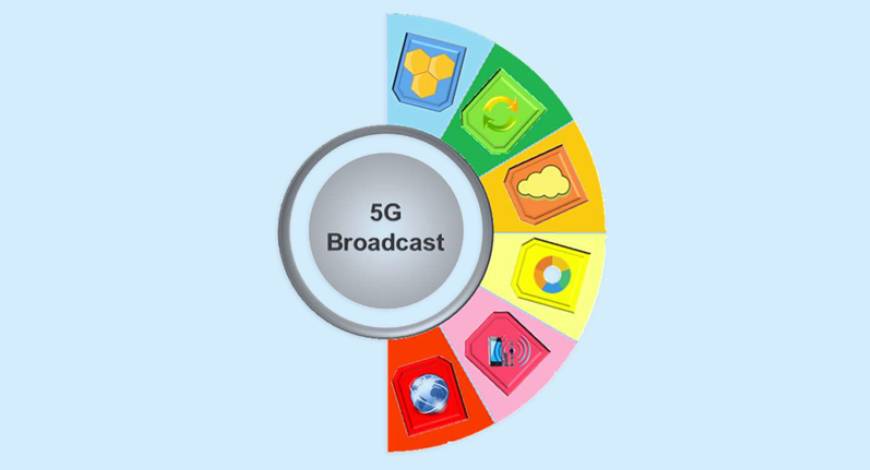BCS Stories
Will 2024 be the year of 5G Broadcast

Media companies around the world that spent billions of dollars each year on the production of both live events and recorded programmes, are now looking at employing 5G to streamline that process. As 5G-enabled remote production becomes widespread and costs fall, the live broadcast market is likely to expand further still.
The dramatic reduction in costs will make it easier for semi-professional and amateur organisations to broadcast live coverage of sports fixtures, concerts, festivals and other events. By using 5G to capture live video streams from multiple cameras, amateurs will be able to produce a broadcast of a much higher quality than has been possible in the past.
At the same time, 5G-enabled remote production will make it easier for media companies to offer viewers a choice of camera angles at a live sports event, for example. In the past, everyone was watching the same feed even though there were 30 plus cameras. When it is 5G-enabled, multiple people can do simultaneous production in the cloud. It is now possible to do creative production from multiple different angles, serving people’s different interests.
Although 5G networks in the sub 6GHz spectrum bands performs very well, it is expected to become much busier in future as demand for 5G rises. Broadcasters are looking at the 5G mmWave to be widely deployed in sports arenas, concert halls and other entertainment venues, where there will be demand for very high capacity connectivity. The production of highly immersive 360-degree footage, for virtual reality and Metaverse applications, would also benefit from 5G mmWave connectivity.
What is 5G Broadcast? 5G Broadcast is a global terrestrial broadcast standard that was completed in 2020 as part of the 3GPP Release 16 specifications. It added enhanced features to the initial enhanced TV (enTV) standard that was part of 3GPP Release 14. 5G Broadcast has been endorsed as a standalone terrestrial broadcast system via ETSI TS103 720 technical specification and most recently by ITU-R where it is defined as a worldwide standard within ultra-high frequency (UHF) band. 5G Broadcast meets all broadcast requirements defined in 3GPP TR 38.913.
It is technology designed specifically to target traditional broadcasters with a broadcast network infrastructure and UHF broadcast spectrum assets. In September 2023, 3GPP updated the specifications to add support for the broadcast bands.
Target spectrum bands for 5G broadcast from 3GPP.
Due to its 3GPP heritage, 5G broadcast is primarily focused on mobility use cases (e.g., smartphones). However, it does not require the network to support unicast nor the device to have a SIM card or a cellular subscription for free-to-air broadcast reception. While unicast is not required, 5G Broadcast can be combined with unicast to deliver a fully hybrid, integrated user experience leveraging the best aspects of unicast and broadcast technologies.
A broadcast or multicast functionality is not new in cellular systems — 5G Broadcast/Multicast has a predecessor in previous cellular generations, called MBMS: Multimedia Broadcast Multicast Services (MBMS), which was explored by Qualcomm (via MediaFLO), Verizon and MobiTV, providing live or linear TV services to mobile phones. But mobile TV in its early incarnations ultimately spluttered and didn’t succeed commercially. Users at the time preferred to choose their video content, even if that meant short clips from the internet and eventually from YouTube and social media, rather than watch traditional television content on their phones.
 Shashi Shekhar Vempat
Shashi Shekhar Vempat
Former Chief Executive Officer,
Prasar Bharati
“The convergence of broadcasting and 5G opens up the possibility to deliver both broadcast video and audio services over a common infrastructure to a common application interface on smartphones apart from opening up avenues for a new class of data broadcast services into internet-of-things and machine-to-machine ecosystems, as well as autonomous vehicles.
This will, however, require a creative confluence of capabilities across D2M, UPI and other technology stacks to unleash new use cases and business models unique to India. It will also call for a concerted multi-stakeholder impetus to D2M from standards development to public-private partnership-based seed investments.
As the world’s largest democracy, most vibrant creator economy, and the biggest open market for smartphones, India is uniquely positioned to lead the world on mass adoption of 5G by unlocking the potential of direct-to-mobile broadcasting. Whether D2M can become a transformational offering will depend on timely action to seize the moment.”
The 3GPP point-to-multipoint interface specification outlines the ability for a cellular network to deliver broadcast and multicast services, either at a network level or to selected cells. This is somewhat similar to how emergency alerts are broadcast based on a device’s location—which is another potential use case for the technology.
Regardless of the commercial success (or lack of), MBMS has continued to evolve in 3GPP standards work. In LTE, it became enhanced MBMS (eMBMS), which also saw multiple technology demonstrations, but not much in the way of commercial implementation. In 5G, eMBMS has been iterated to 5G Broadcast/Multicast.
What’s next?
For broadcasters, 5G Broadcast can unlock access to billions of devices while bringing new experiences and benefits to consumers in both developed and emerging countries.
Among broadcast partners, there is significant interest to learn and get started with 5G Broadcast. In 2023, there were more than 17 demonstrations and small-scale trials in several countries including China, USA, Germany, France, Spain, Italy, Austria, Estonia and Czech Republic. Additionally, there are more countries including India, Malaysia and Turkiye that are studying 5G Broadcast for potential trials in near future. Looking ahead into 2024, larger-scale trials planned are anticipated around UEFA Euro 2024 and Summer Olympics.





